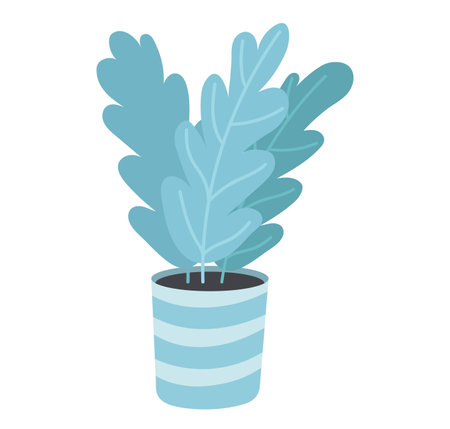1. Introduction to Forcing Bulbs Indoors
When the winter months arrive and your garden goes quiet, it doesn’t mean you have to say goodbye to colorful blooms until spring. One popular way to enjoy flowers during the colder season is by forcing bulbs indoors. This simple gardening method brings a touch of spring into your home, even when there’s snow on the ground.
Forcing bulbs means tricking flower bulbs into thinking that winter has passed, prompting them to bloom early indoors. It’s a fun and rewarding project that requires just a bit of planning and patience. Whether you’re new to gardening or a seasoned plant lover, forcing bulbs is an easy way to keep your green thumb active all winter long.
This activity is especially popular across the United States where winters can be long and gray. With a few supplies and some know-how, you can brighten your living space with the cheerful colors of tulips, daffodils, hyacinths, and more—right on your windowsill or kitchen counter.
Why People Love Forcing Bulbs
There are plenty of reasons why indoor bulb forcing has become a favorite cold-weather tradition:
- Brings color and life indoors: Blooming flowers lift spirits during gloomy winter days.
- Easy DIY project: Requires minimal tools and space—perfect for beginners or apartment dwellers.
- A head start on spring: Enjoy beautiful flowers weeks or even months before they naturally bloom outdoors.
Commonly Forced Bulbs
The most commonly forced bulbs include:
| Bulb Type | Bloom Colors | Scent | Chilling Requirement |
|---|---|---|---|
| Tulips | Pinks, reds, yellows, whites | Mild fragrance | Yes (12-16 weeks) |
| Daffodils | Yellow, white, orange | Mild to strong scent | Yes (12-16 weeks) |
| Hyacinths | Purple, pink, white, blue | Strong sweet fragrance | Yes (10-12 weeks) |
| Paperwhites (Narcissus) | White | Pungent scent | No chilling required |
| Crocus | Purple, yellow, white | Mild fragrance | Yes (8-10 weeks) |
No matter which type you choose, forcing bulbs indoors is a charming way to bring joy and natural beauty into your home throughout the winter season.
2. Choosing the Right Bulbs for Forcing
Forcing flower bulbs indoors is a fun and rewarding way to enjoy spring blooms during the cold, gray months of winter. But not all bulbs are created equal when it comes to indoor forcing. Some varieties adapt better to indoor conditions and bloom more reliably inside your home. Here’s a guide to help you choose the best bulbs for indoor forcing.
Best Bulbs for Indoor Forcing
The following bulbs are known for their ability to thrive indoors with minimal effort. They’re popular choices because they don’t require complicated chilling processes or special care.
| Bulb Type | Features | Chilling Required? | Fragrance |
|---|---|---|---|
| Tulips | Wide range of colors and shapes; classic spring favorite | Yes (10-14 weeks) | Mild to no fragrance |
| Daffodils (Narcissus) | Bright yellow or white flowers; cheerful and easy to grow | Yes (12-16 weeks) | Lightly fragrant |
| Hyacinths | Dense spikes of colorful blooms; very showy indoors | Yes (10-12 weeks) | Strong, sweet fragrance |
| Paperwhites (Narcissus papyraceus) | No chilling needed; fastest blooming bulb for indoor use | No | Pungent, sweet fragrance (can be strong) |
Quick Tips for Success
🌷 Tulips:
Select short-stemmed varieties like Apricot Beauty or Red Riding Hood for best results indoors. Chill them in the fridge for about 12 weeks before planting.
🌼 Daffodils:
Tête-à-Tête is a popular miniature daffodil perfect for pots. Group several bulbs together in one container for a fuller look.
🌸 Hyacinths:
If you love fragrance, hyacinths are a top pick. Use hyacinth glasses or shallow containers filled with pebbles and water to grow them without soil.
🤍 Paperwhites:
The easiest bulb to force—just place them in a shallow dish with stones and water, and they’ll bloom in about 3-5 weeks. Perfect if youre starting late in the season!
When choosing bulbs, always go for firm, healthy ones without soft spots or mold. Bigger bulbs generally produce stronger plants and more impressive blooms. Whether youre aiming for a single variety or mixing types for a layered display, selecting the right bulbs is the first step toward creating your own mini spring indoors.

3. Chilling Requirements and Preparation
Many spring-flowering bulbs, such as tulips, hyacinths, daffodils, and crocuses, need a cold period to mimic winter before they can bloom indoors. This process is called “chilling,” and its essential for successful indoor forcing.
Why Do Bulbs Need Chilling?
In their natural environment, these bulbs spend the winter underground in cold soil. The chill triggers biochemical changes inside the bulb that allow it to flower later on. Without this cold period, the bulbs may produce weak growth or fail to bloom altogether.
How Long Should You Chill Bulbs?
The chilling time varies depending on the type of bulb. Here’s a quick reference guide:
| Bulb Type | Chilling Duration (Weeks) | Ideal Temperature (°F) |
|---|---|---|
| Tulips | 12–16 | 35–48 |
| Daffodils | 12–15 | 35–48 |
| Crocuses | 12–15 | 35–48 |
| Hyacinths | 10–12 | 35–48 |
How to Chill Your Bulbs Properly
You don’t need a fancy setup—just your refrigerator will do! Follow these steps:
- Select Healthy Bulbs: Choose firm, unblemished bulbs with no signs of mold or rot.
- Avoid Ethylene Gas: Keep bulbs away from fruits like apples and bananas, which emit ethylene gas that can damage bulbs.
- Create Ventilation: Place bulbs in a breathable paper bag or perforated plastic container.
- No Freezing: Ensure the temperature stays above freezing—between 35°F and 48°F is ideal.
- Date and Track: Label each batch with the start date so you know when they’re ready to plant.
Troubleshooting Tips
- If your refrigerator space is limited, consider using an unheated garage or basement that stays within the right temperature range.
- Avoid storing bulbs near strong-smelling foods or items that could transfer odors.
- If youre short on time or live in warmer regions, look for pre-chilled bulbs sold at garden centers during fall and early winter.
This chilling phase is crucial for indoor blooms that look just as vibrant as those grown outdoors in spring. Once theyve chilled long enough, your bulbs are ready for potting and forcing indoors!
4. Planting and Growing Conditions Indoors
Forcing bulbs indoors is a fun and rewarding way to enjoy colorful blooms during the cold winter months. To set your bulbs up for success, its important to create the right environment inside your home. Heres how you can plant bulbs in containers and provide the ideal conditions they need to thrive.
Selecting Containers
Choose containers that have good drainage holes at the bottom. Bulbs dont like to sit in water, so proper drainage is essential to prevent rot. You can use ceramic, plastic, or even decorative pots—just make sure excess water can escape easily.
Choosing the Right Potting Mix
A well-draining potting mix is key for healthy root development. Avoid using garden soil, which may be too heavy and can retain too much moisture. A general-purpose potting mix with added perlite or sand works great for most bulbs.
| Potting Mix Component | Purpose |
|---|---|
| General-purpose potting soil | Provides nutrients and basic structure |
| Perlite or coarse sand | Improves drainage and aeration |
How to Plant Bulbs Step-by-Step
- Add a layer of gravel or small stones at the bottom of the container for extra drainage.
- Fill the container about two-thirds full with your potting mix.
- Place bulbs on top of the soil with the pointed end facing up.
- Space them closely but not touching—about half an inch apart is fine.
- Cover with more potting mix until just the tips are showing (for most bulbs).
- Water lightly to settle the soil without soaking it.
Light Requirements
Once your bulbs have chilled (if needed), move them to a bright spot with indirect sunlight. A south- or west-facing window is ideal. Too little light can cause weak, leggy growth.
Watering Tips
Keep the soil slightly moist but never soggy. Overwatering is one of the most common mistakes when forcing bulbs indoors. Use your finger to check moisture—water only when the top inch feels dry.
Temperature Guidelines
Buds develop best in cool indoor temperatures around 60–65°F (15–18°C). Avoid placing containers near heat vents or drafty windows. If youre chilling bulbs before growth, store them in a dark area like a garage or fridge at around 35–48°F (1–9°C) for several weeks (usually 12–16 weeks depending on bulb type).
Ideal Indoor Conditions Summary
| Condition | Ideal Range |
|---|---|
| Light | Bright, indirect sunlight |
| Water | Slightly moist, not soggy |
| Temperature (after chilling) | 60–65°F (15–18°C) |
| Chilling period (if required) | 35–48°F (1–9°C) for 12–16 weeks |
Caring for your forced bulbs indoors doesn’t have to be complicated. With the right container, soil, and growing conditions, you’ll be rewarded with vibrant blooms that brighten your home all winter long.
5. Encouraging Blooms and Enjoying the Results
Once your bulbs have completed their chilling period, it’s time to bring them into the warmth of your home and encourage them to bloom. This is when the real magic happens—watching green shoots stretch toward the light and transform into colorful blossoms right in the middle of winter.
Transitioning Bulbs Indoors
After 10-16 weeks of cold treatment (depending on the bulb variety), move your potted bulbs from the fridge or unheated garage to a cool indoor spot with indirect sunlight. Choose an area around 50–60°F (10–15°C) for the first few days. Gradually introduce them to brighter light and slightly warmer temperatures to mimic the arrival of spring.
Ideal Transition Timeline
| Week | Temperature | Light Condition |
|---|---|---|
| 1–3 Days | 50–60°F | Indirect sunlight |
| 4–7 Days | 60–65°F | Bright indirect sunlight |
| 8+ Days | 65–70°F | Sunny windowsill or under grow lights |
Caring for Bulbs During Flowering
While blooming, bulbs need consistent care to stay vibrant. Water them when the soil feels dry about an inch below the surface, but avoid overwatering—soggy soil can cause rot. Keep them away from heat vents or drafty windows, as sudden temperature changes can stress the plants.
- Water: Lightly moist soil is best—never let it dry out completely or sit in standing water.
- Light: Bright, indirect sunlight encourages upright growth and vivid blooms.
- Support: Tall varieties like tulips may need support sticks or decorative branches to help them stand tall.
Creative Ways to Display Your Blooms
Your flowering bulbs deserve a spotlight! Here are some fun ideas to show them off around your home:
- Mason jars & glass containers: Let roots peek through clear sides for a rustic look.
- Baskets with moss: Nestle pots into a woven basket lined with moss for a cozy cottage feel.
- Dinner table centerpiece: Group several pots together on a tray with candles and pinecones for a seasonal touch.
No matter how you display them, forced bulbs bring life, color, and hope into your space during even the grayest winter days. Enjoy every moment of watching nature bloom indoors!
6. Post-Bloom Care and Reusing Bulbs
After your indoor forced bulbs have finished blooming, it’s natural to wonder what comes next. Can you reuse the bulbs? Should you toss them? The good news is that with a little care, many types of bulbs can be reused or even planted outdoors for future enjoyment. Here’s how to handle your post-bloom bulbs and make the most of their potential.
Let the Leaves Stay
Even after the flowers fade, the leaves are still working hard. They continue to photosynthesize and store energy back into the bulb, which is vital for future growth. Keep the plant in a sunny window and water it as needed until the leaves naturally yellow and die back. Then, you can stop watering and allow the bulb to rest.
To Reuse or Not to Reuse?
Whether a bulb can be reused depends on its type and how it was forced. Heres a quick guide:
| Bulb Type | Can Be Reused? | Special Notes |
|---|---|---|
| Tulips | Rarely | Often wont bloom well again indoors; better suited for compost or outdoor planting if hardy. |
| Daffodils | Yes | Can be planted outdoors after foliage dies back; may rebloom in future years. |
| Hyacinths | Sometimes | May rebloom outdoors after a year or two of recovery time in soil. |
| Crocus | Yes | Good candidates for garden planting; allow foliage to fully die back first. |
| Paperwhites | No (indoors) | Usually dont rebloom indoors; not winter-hardy in colder U.S. zones. |
Planting Outdoors After Forcing
If you live in a USDA Hardiness Zone where your bulb type is winter-hardy, you can plant them in your garden once all danger of frost has passed. Choose a sunny spot with well-drained soil. Don’t expect blooms the first year, but with patience, they may return stronger in seasons to come.
Storing Bulbs for Next Year
If youre planning to reuse bulbs indoors again, let them dry out completely once their foliage has died back. Store them in a cool, dark, and dry place—like a paper bag in a garage or basement. Come fall, you can try forcing them again using the same chilling method you used before.
Storage Tips:
- Label each bulb type so you know what you’re working with later.
- Avoid plastic bags—they trap moisture and can cause rot.
- Check periodically for mold or softness; discard any damaged bulbs.
A Little Effort Goes a Long Way
Caring for your post-bloom bulbs doesn’t take much effort but can reward you with beautiful blooms year after year—whether indoors or out. With proper handling, your favorite spring flowers can brighten more than one season.


